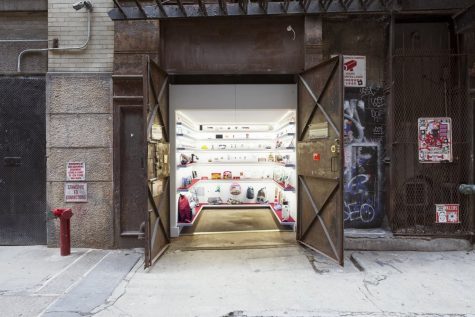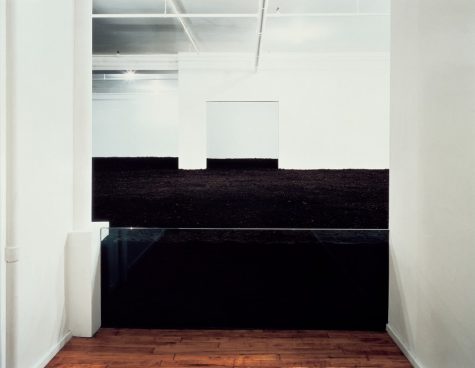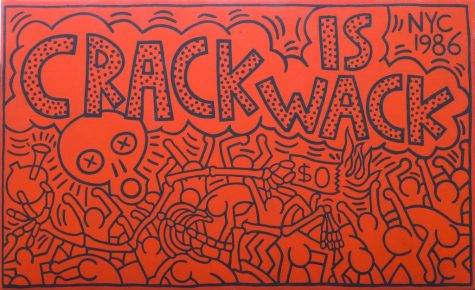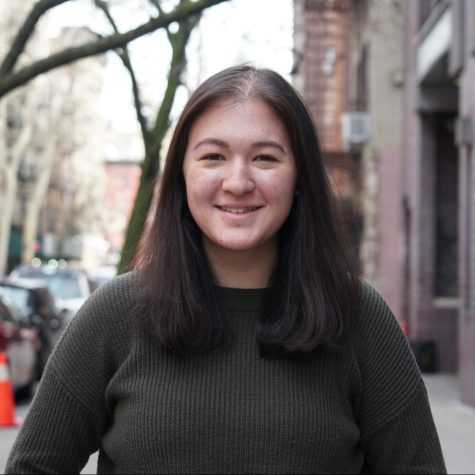Hidden Art
January 29, 2018
Many of New York City’s best kept secrets are hidden in plain sight. You could be passing them on your everyday commute to class or see them but not think twice about the history they hold. The city has become the perfect canvas for artists to test out their idiosyncratic ideas and manifest them into the oddest of spaces whether that be an apartment in SoHo or a large-scale mural in Brooklyn. The best part is: all of these are free to see.
 Courtesy of Mmuseumm
Courtesy of Mmuseumm
Mmuseumm
4 Cortlandt Alley
This tiny modern natural history museum is the definition of a hole in the wall. It’s a small-scale museum housed in a freight elevator which curates modern artifacts that often would not be considered art. Objects in the museum range from a Doritos chips dash button from Amazon to those scraps of paper where you test your next pen purchase. If you go outside of its operating hours, you can look through small rectangular viewing slits to still get a preview of the overall exhibit. The museum goes under a yearly revamp to bring in a new theme and modernize the objects within. Currently, the museum is closed for its exhibition turnover for the spring, but in the meantime, check out some of its previous exhibitions here.
 Courtesy of Dia Art Foundation
Courtesy of Dia Art Foundation
The New York Earth Room
141 Wooster St., Apt. 2B
People might tell you that some works of art are complete trash. Well, The New York Earth Room is simply a room full of dirt. This 280,000-pound installation sits in an apartment among other residential apartments. According to the artist Walter De Maria, The Earth Room is a white room evenly filled with 22 inches of dirt. In addition to the SoHo location, De Maria has done two other Earth Room installations in Germany, both of which no longer exist. Another installation of De Maria’s, titled “The Broken Kilometer,” occupies an apartment two blocks down if you’re digging for more of his work.
First Street Green Art Park
33 E. First St.
Acting as a vestibule from the East Village to SoHo, the First Street Green Art Park features a 100-foot mural space that can be decorated by anyone — with permission from the New York City Department of Parks. Each mural stays up for two to three months and encourages community members to participate in the painting of all projects. Past murals have included one focused around Mexican Day and another titled “Parkour in the City.” Last fall, WSN featured Victor Leonard, a Gallatin senior who helped plan and participated in the Planned Parenthood x ButLikeMaybe mural that is currently on display.
“Times Square” Sound Installation
Broadway (Between 45th and 46th Street)
Who says that art has to be just visual? Audio artist Max Neuhaus installed this piece below a metal vent from 1977 to 1992, but it was later restored and reopened in 2002. Despite its long runtime, this installation often goes unnoticed as it blends in among the hundreds of other grates above subway lines. Many visitors have named the experience the “hum,” which never stopped even when under construction during Times Square’s ongoing redesign and when the grate was surrounded by barricades. Neuhaus told The New York Times that he never intended for the installation to go immediately noticed but rather slowly self-discovered, which couldn’t be done with a label reading “An Artwork by Max Neuhaus.” The best time to experience the hum for yourself is on a weeknight around midnight to 2 a.m. when Times Square is vacant.
 Courtesy of WordPress
Courtesy of WordPress
“Crack Is Wack” Mural
Harlem River Drive and Second Avenue
Created as a vandalization of an East Harlem park during the mid-1980s, Keith Haring’s “Crack Is Wack” mural has even taken the namesake of the park, officially called Crack Is Wack Playground. Haring painted it in honor of his young studio assistant, Benny, who had recently become addicted to crack. The mural was simple and anti-drug related: “Crack Is Wack.” Haring wasn’t commissioned or even given permission to create this large-scale mural on the handball court wall; he went in the dead of night to paint this masterpiece. After a few legal complications, Haring was arrested by the New York City Police for vandalism of city property, but after reports from The Washington Post and the New York Post, locals and the New York City Department of Parks and Recreation came to his defense, letting him get off easy from any legal obstructions. The Parks Department wanted to keep the mural in situ, but when Haring was released from his arrest, his vandal work had been vandalized. Haring made a second, approved edition of his mural, which has since been repainted and reimagined on the same wall after the death of Haring in 1990.
Read more from Washington Square News’ “Hidden” feature. Email Pamela Jew at [email protected].























































































































































